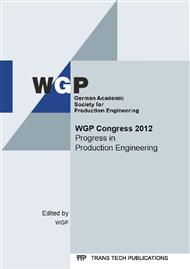p.89
p.99
p.113
p.127
p.139
p.151
p.165
p.181
p.197
Improving Efficiency in Robot Assisted Belt Grinding of High Performance Materials
Abstract:
In gas turbines and turbo jet engines, high performance materials such as nickel-based alloys are widely used for blades and vanes. In the case of repair, finishing of complex turbine blades made of high performance materials is carried out predominantly manually. The repair process is therefore quite time consuming. And the costs of presently available repair strategies, especially for integrated parts, are high, due to the individual process planning and great amount of manually performed work steps. Moreover, there are severe risks of partial damage during manually conducted repair. All that leads to the fact that economy of scale effects remain widely unused for repair tasks, although the piece number of components to be repaired is increasing significantly. In the future, a persistent automation of the repair process chain should be achieved by developing adaptive robot assisted finishing strategies. The goal of this research is to use the automation potential for repair tasks by developing a technology that enables industrial robots to re-contour turbine blades via force controlled belt grinding.
Info:
Periodical:
Pages:
139-149
Citation:
Online since:
April 2014
Authors:
Price:
Сopyright:
© 2014 Trans Tech Publications Ltd. All Rights Reserved
Share:
Citation:


